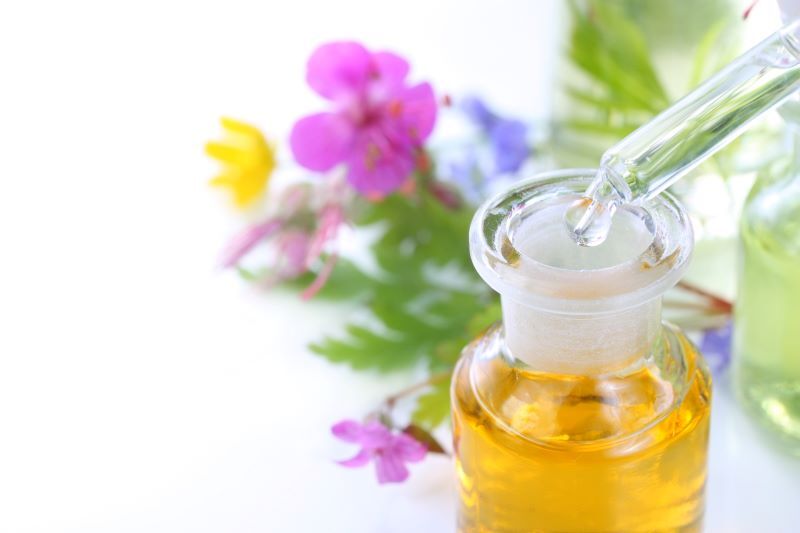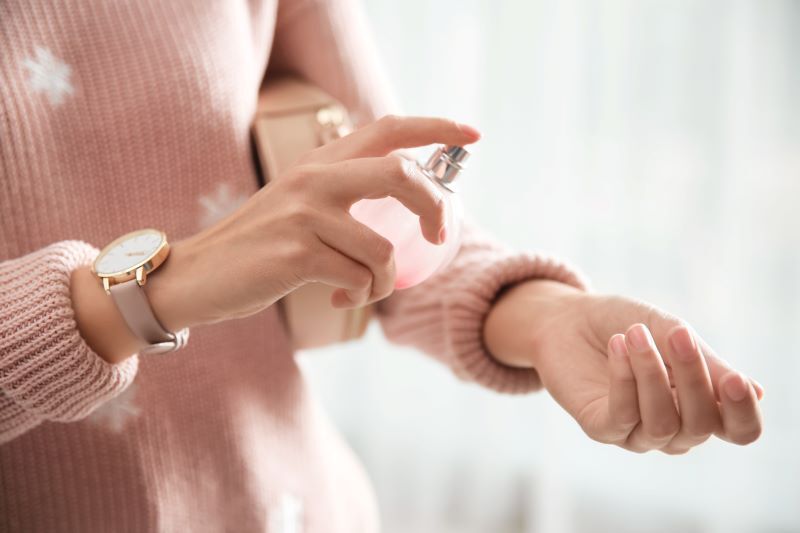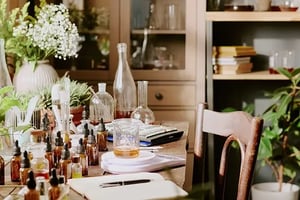Professional formulation of natural fragrances

january 31, 2023
Make your own perfume with essential oils
If you think you can't make your own perfume with essential oils, think again! It's easy to create your own fragrance, as long as you follow certain rules. That's why, in this article, Landema has chosen to present you with a guide to help you get started in the world of perfumery.

Respecting the structure of a perfume
When starting out in the manufacture of a perfume with essential oils, it's essential to know how its structure breaks down. A fragrance is not just a mixture of different products. It comprises three components called "notes". The top note is the lightest. It's what you smell first, but doesn't last. The heart note is the perfume's very identity, i.e. its theme (woody, floral...). Finally, heavier molecules make up the base note. It is their intensity that reveals the soul of the fragrance and fixes its memory over time.
Harmony in the making of a perfume with essential oils
To harmonize the three main notes of a perfume, you'll need to choose between different categories of essential oils. To make your life easier, we've grouped them according to the qualifiers in which they are most often found:
- For top notes, you can use the " citrus" family, corresponding to citrus fruits, such as bergamot (Citrus bergamia) or lemon (Citrus limon), for example.
- Heart notesfeature floral themes such as ylang-ylang and geranium.
- Finally, base notes are often composed of woody scents: Sandalwood, Patchouli, Cistus...
There are many other fragrance notes, such as "aromatic" ones, including essential oils of spearmint (Mentha spicata), thyme (Thymus Vulgaris à Thymol), clary sage (Salvia sclarea) or lavender (Lavandula angustifolia ssp. angustifolia). These will add freshness to your blend. Finally, essential oils derived from spices, such as cinnamon (Cinnamomum cassia) or clove (Syzygium aromaticum), offer a real invitation to travel.
Steps to making your own perfume with essential oils
To make your own perfume with essential oils, we recommend you follow the steps below.
- First, you gather together the various products you'll need for your recipe. You begin by selecting the essential oils you'd like to find in your fragrance, for each of the notes that will structure it. Of course, you'll find everything you need on our site.
- Next, select the diluent, which can be either neutral alcohol or vegetable oils. The latter are very interesting, as they are gentler on the skin and protect it from dehydration.
- You can also add a fixative to your recipe. This is usually part of the base notes. One of the most common ones used in natural perfumes is iris root powder (Iris germanica florentina), but you can also use the essential oils we mentioned earlier.
- You'll also need four amber bottles with dropper caps.
- Once you've selected all your products, in the first bottle, mix the essential oils corresponding to the base note. Adjust the dosage so that the aromas match your taste.
- Do the same for each of the other notes.
- Then, combine your three blends in a fourth bottle and add the diluent.

Warning: the use of essential oils can be problematic: allergies, irritations... The composition of a fragrance strongly depends on the area of application. Perfuming clothing remains the safest solution.
Our oils are pure: handling with gloves is strongly recommended.
1- Select the theme of your fragrance: woody, floral, spicy...
2- The medium: fragrances on alcohol or vegetable oils? The latter are very interesting, providing protective or moisturizing care. Note that you may need to use a solubilizer for certain essential oils.
3-Create a blend by notes: a head blend in one bottle, a heart blend in a second and a base blend in a third. The idea is to find the best olfactory harmony for each bottle.
4- Assemble the head-heart-bottom blend according to your taste in the fourth bottle, readjusting your 2 favorite essential oils among those used in this last blend.
5- Dilutions on carrier: test different fragrance dosages in the validated carrier. Always pour the fragrance into the carrier. Consider using a preservative. In all cases, we advise you to keep your bottle away from light.
You now have everything you need to make a successful perfume with essential oils, and enter the world of DIY cosmetics. You'll probably have to make several attempts with small quantities of essential oils before you get the result you're looking for. But it's well worth the effort, because in the end, you'll have a unique fragrance that's totally your own.
With these tips, you're entering the world of DIY cosmetics. Be patient and curious: once you've tried your hand at it, you'll have created a fragrance that's unique and perfectly suited to you.



